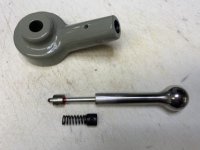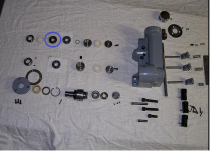wrench
Titanium
- Joined
- Jul 9, 2002
- Location
- Sunnyvale, CA
How hard is it to clean the brushes when you are done? I'm rather pathetic with that part of painting... To clean well seems to require a huge amount of (whatever) cleaning agent. It seems like I have to go through gallons of the stuff (well, I'm exagerating now) to get a stupid brush clean.. Something like a sprayer is much easier because it has hard metal/plastic surfaces. For this reason, I tend to use lousy brushes that I can throw away... I guess I should change my ways because I agree that spraying this small stuff is a bit of a PITA. Your parts look like they wetted down beautifully without any brush marks... Very nice.
Sometime we should make time to meet in person. We're obviously pretty close to one another.
--Alan
Sometime we should make time to meet in person. We're obviously pretty close to one another.

--Alan









